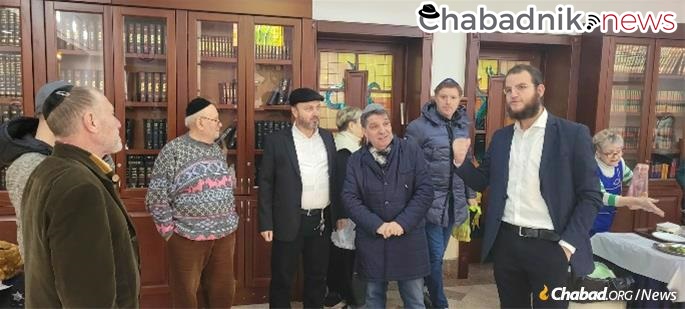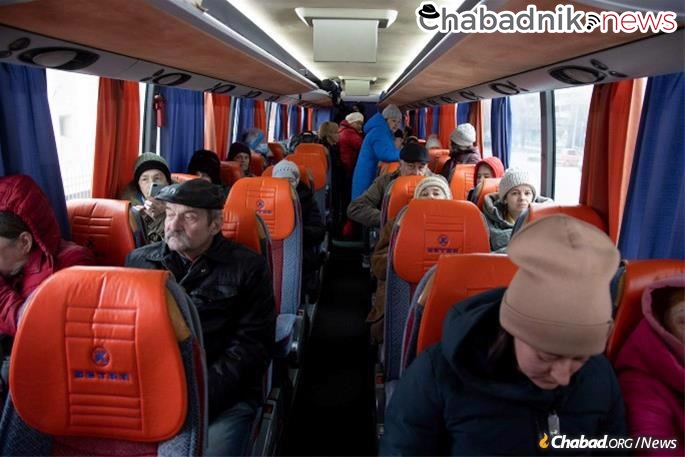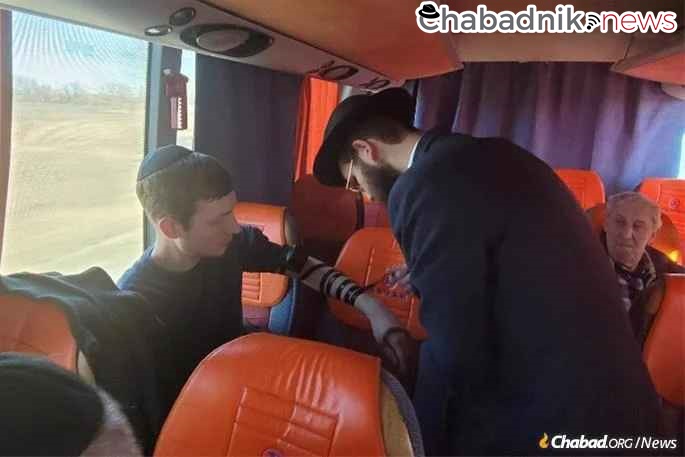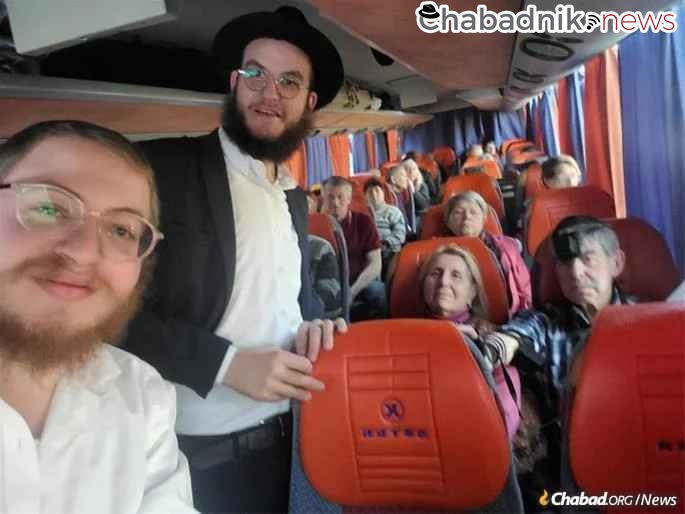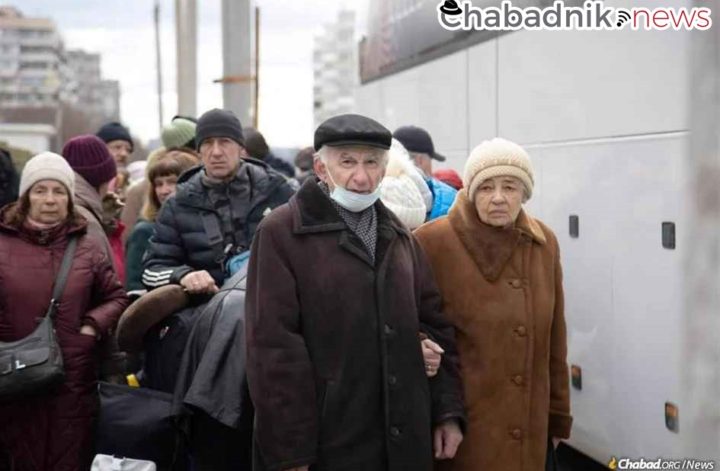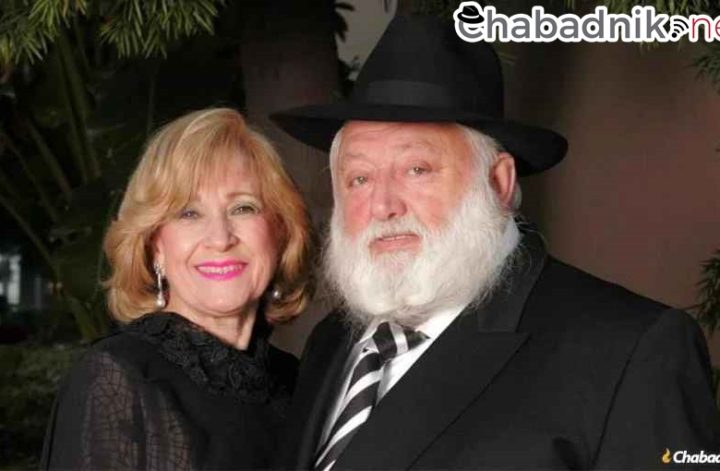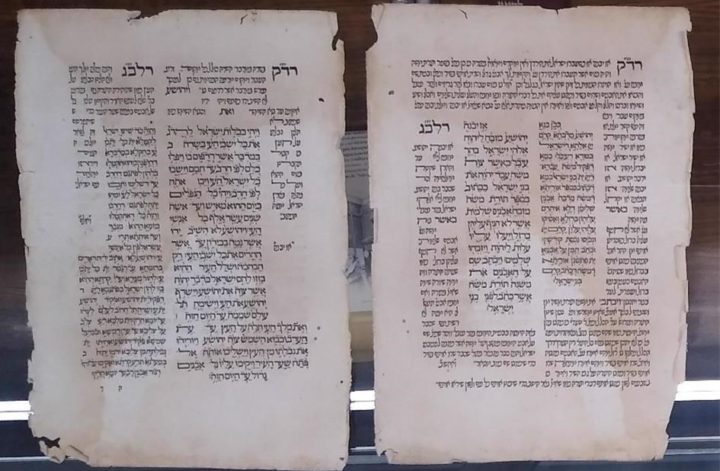Reading the Megillah amid air-raid sirens and adjacent to Europe’s largest nuclear plant
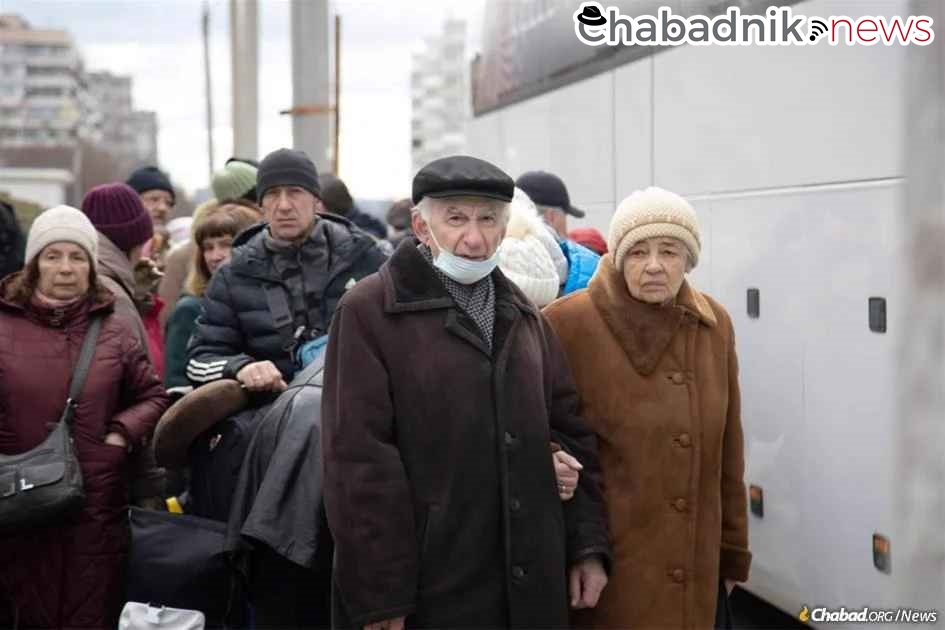
Air-raid sirens in Ukraine are not very loud for the same reason there are so few bomb shelters—no one ever expected to need them. In most parts of the country, the most reliable way to stay abreast of deadly bombing raids is via Google alerts, which is why Dubi Ehrentreu and Mendel Bleich didn’t notice Zaporizhzhia’s Red Alert go off late Purim morning. Dubi was reading the Megillah—the Scroll of Esther, telling the story of the Jewish people’s salvation from a decree of annihilation in ancient Persia—for 80 hardy Jews at Chabad-Lubavitch’s central Zaporizhzhia synagogue, while Mendel was pointing along.
“When we finished the Megillah,I took out my phone and saw that there’d been a siren,” says Bleich, 22. Over the six days that he and Ehrentreu, also 22, spent in Zaporizhzhia—an important industrial city in Ukraine’s southeast that saw heavy fighting in the first week of war, when Russia captured the city’s massive nuclear power plant—there were about six air-raid sirens. “You stop everything and run into the basement of whatever building you’re in,” says Bleich. “There’s not much else to do. There aren’t any actual bomb shelters.”
The two young men are rabbinical students at the Central Lubavitch Yeshivah in Crown Heights, Brooklyn, N.Y. Bleich is the son of Chabad-Lubavitch emissaries in Wellesley, Mass., and grew up in the Boston area, and Ehrentreu hails from Zaporizhzhia, where his parents, Rabbi Nachum and Dina Ehrentreu, established Chabad of Zaporizhzhia in 1997. A week before Purim, the younger Ehrentreu made the decision that he could not allow the many Jews still in Zaporizhzhia to be alone on the joyous holiday, and drafted his friend Bleich to join him for Purim in his hometown. It wasn’t just about the Megillah, either.
“The goal was to strengthen the people here,” says Bleich. “They’re in such a depressed state, just to be able to bring some joy and Purim spirit was vital.”
Ehrentreu’s parents had left Zaporizhzhia on March 3-4 during the dangerous battle at the nuclear plant—Europe’s largest, with the fighting sparking global fears of nuclear disaster—taking along with them 100 members of the Jewish community. Throughout the first week of the war and ever since, Chabad’s modern synagogue in Zaporizhzhia has served as a shelter for Jews and non-Jews, its sturdy basement offering a measure of protection from bombs and the synagogue staff distributing food and medicine for everyone in need. The city remains under attack by Russian forces, and just a few days after Purim, a 38-hour curfew was declared after barrages from mortars, tanks, helicopters and rocket systems killed at least nine.
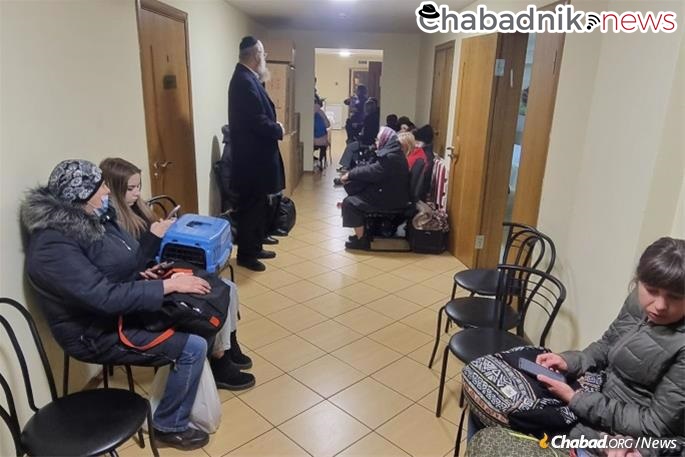
“I didn’t want to leave Zaporizhzhia, we’ve been there 25 years,” Rabbi Ehrentreu says. “We built a beautiful synagogue—all with local contributions, by the way—a Jewish preschool and school, a whole Jewish infrastructure, but here I was spending all my time sitting in the dark, in a basement, and I realized that I’d be able to do far more to help my community from outside Ukraine than from a basement.”
Indeed, every day since, aside from distributing aid, Ehrentreu arranges for buses to evacuate people from Zaporizhzhia. They leave from outside the synagogue, bringing hundreds of refugees straight to the Polish border. He also continues to be in touch with people every day by phone.
The younger Ehrentreu likewise spent the first weeks of the war volunteering for the cause. As a native Russian speaker, he’d helped man the emergency call center set up in Crown Heights, working the phones for hours on end to help those within Ukraine get out of their cities to safety.
Still, he couldn’t bear the thought of the Jews of Zaporizhzhia without a proper Purim. He and Bleich packed up four suitcases with some kosher food and a lot of difficult-to-get-in-Ukraine medicine, such as blood-pressure medication, and on March 13 flew from New York to Warsaw.

Megillah and Curfew
Bleich and Ehrentreu arrived in Warsaw on Monday evening and took a car straight towards Ukraine, crossing the border on foot. Aside from them and some aid workers, everyone else was heading in the other direction. They stayed overnight in Lviv before boarding a 23-hour train to Zaporizhzhia, where they arrived on Wednesday morning, the eve of Purim, March 16.
Certain complications arose almost immediately. The Megillah is supposed to be read after nightfall (6:17 p.m. in Zaporizhzhia on that evening, according to Chabad.org’s Halachic Times calculator), but Zaporizhzhia’s curfew is at 7 p.m. Even if they’d have sped through the reading, that wouldn’t give people enough time to get home on time, especially in Zaporizhzhia, a vastly spread-out city that sits on both sides of the Dnieper River. After consulting with rabbis, they read it after 4:36 p.m. (Plag Haminchah).
“About 30 people came to hear the Megillah on the night of Purim,” says the younger Ehrentreu. “We usually have a few hundred community members gather on Purim, but this was beautiful.”
The next day 80 people showed up, and aside from the missed air-raid siren, everything went as planned. Prayers—Zaporizhzhia’s synagogue otherwise also continues to hold regular prayer services every day—the reading of the Megillah, the mitzvot of the holiday, followed by a big and joyous Purim celebration. Ehrentreu says that today, some of the staunchest Jewish community volunteers and activists are people who until recently would only drop by once or twice a year, for Yom Kippur or the like.
“You’re seeing the Jewish spark within each soul come out during these times of war,” he says.
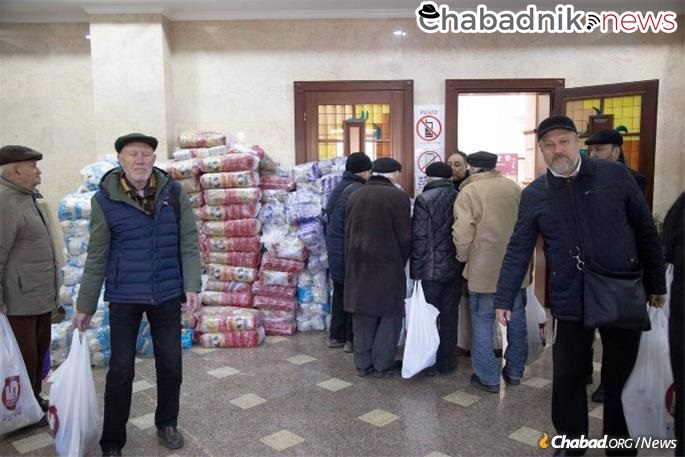
The day-long farbrengen gathering was spirited, with plenty of l’chaims to go around, but difficult.
“It’s truly scary there,” says Ehrentreu. “On Purim, we’re supposed to be joyous, happy, but how can you be happy hearing sirens? Amidst panic? What reason is there to be happy? So we spoke about the fact that when you bring joy to others, you experience it yourself. All of us need to strengthen each other.”
After Purim came Shabbat, on the morning of which the pair found out that the city would soon descend into a 36-hour military lockdown. They led the gathered Jews through a fast prayer service and Shabbat kiddush before heading back to the Ehrentreu’s family home to wait out the lockdown.
On Monday afternoon, March 21, the young rabbis boarded the day’s Chabad evacuation bus leaving Zaporizhzhia and began the long trek back to safety.
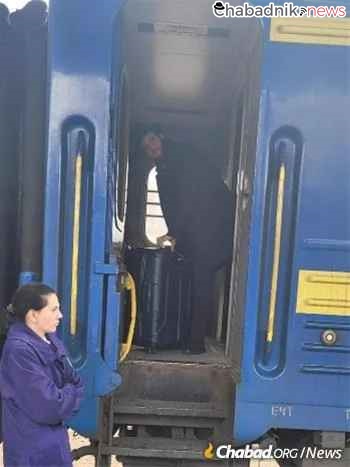
Open Secret
In the days before the war, Zaporizhzhia was less than four hours away from the port city of Mariupol. Today, with Mariupol besieged, cut off from Ukraine by land and sea, and the city shelled into oblivion, it is a world away. Even still, about 100 Jewish families along with thousands of others have been able to escape the hell of Mariupol. The closest Jewish community is in Zaporizhzhia, and Rabbi Mendel Cohen, the rabbi and Chabad emissary of Mariupol, has been helping his community members get there and then help them along out of the country.
What the two yeshivah students had seen and heard in Zaporizhzhia would pale in comparison to the stories they heard from the survivors of Mariupol sitting next to them on the bus.
“They left with just their passports, and that’s it,” says Ehrentreu. “They had no food, no water, no electricity. To get out of Mariupol, they went through dangers none of us could dream of. There was an elderly Jewish man sitting in the front of the bus just crying. That’s all he was doing. It was painful to watch.”
As the bus headed west, Bleich and Ehrentreu went up and down the aisle donning tefillin with the Jewish men, helping them recite the words of the Shema, Judaism’s hallowed declaration of faith. Ehrentreu approached an elderly man whom he recognized from the community.
“I’m Gregory Rivkin,” the man reminded Ehrentreu as they wrapped tefillin. “My grandfather was a Chassid. He was the last shochet [‘ritual slaughterer’] of Zaporizhzhia.”
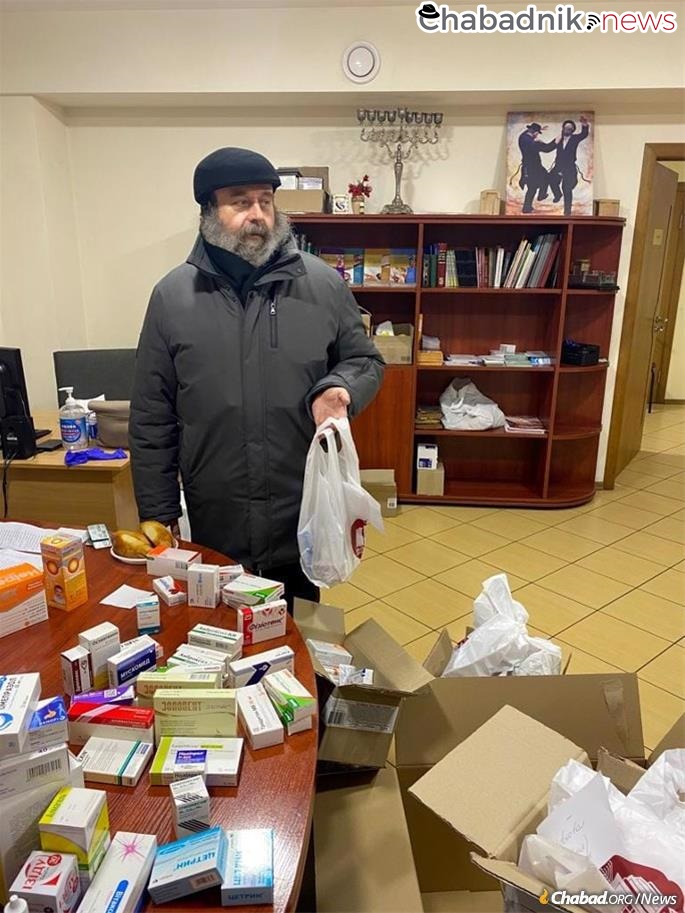
The greatest open secret of Chabad’s unparalleled success in all the countries that once made up the Soviet Union is the fact that the Chassidic movement is of the place.
“The leader of the religious resistance and the coordinator of much underground activity was [the Sixth Rebbe, Rabbi Yosef Yitzchak Schneersohn, of righteous memory],” writes historian Zvi Gitelman. “He was constantly hounded by the [Yevsektzia, the Jewish sections of the Communist Party] and the secret police and was finally forced to leave the Soviet Union [in 1927], but not before he had trained many teachers whose influence was felt in the USSR long after his departure.”
These teachers and activists were his followers, Chabad Chassidim who had studied in the famed yeshivah in the village of Lubavitch and its many clandestine branches when it was forced to go underground at the onset of Communism, individuals who suffered for their commitment but kept the embers of Jewish life aglow through 70 years of unceasing persecution. At the same time, the Sixth Rebbe continued his work for the Jews of the Soviet Union from abroad. This work was further expanded by his son-in-law and successor the Rebbe—Rabbi Menachem M. Schneerson, of righteous memory—who would utilize a vast network to both provide material and spiritual support to the embattled Jews behind the Iron Curtain, and work behind the scenes to help them leave the country.

Gregory Rivkin’s grandfather, Rabbi Meir Shlomo Malkin, was one such loyal Chabad foot-soldier in Zaporizhzhia. Malkin was born around 1888 elsewhere in Ukraine, and in his early teens set out for the yeshivah in Lubavitch, where he studied until 1909. After marrying a woman from Zaporizhzhia, he settled there, and when his father-in-law passed away inherited his position as shochet of the city, and also working as a mohel. After surviving World War II in Central Asia, he returned to his hometown and his position.
“He would wake up very early in the morning and pray,” another grandson of his told Kfar Chabad magazine in 2015, “and then head to the marketplace where he served as a shochet. He didn’t stop until the end of his life.” Malkin passed away in 1976 at the age of 88.
Forty-six years later, Malkin’s grandson sat on a bus, together with his family, wearing tefillin and heading out of the city whose Jewish spiritual survival ran in his blood.
“When I was a yeshivah student, I saw the great love with which the Rebbe spoke about Soviet Jews, the way he looked at them,” says the elder Rabbi Ehrentreu. “That’s what made me want to move to serve the Jews of Ukraine, and what reminds me of the awesome responsibility we have towards each and every one of them.”
You can support the continued work of the Jewish Community of Zaporizhzhia, here.
Click here for a prayer you can say and a list of good deeds you can do in the merit of the protection of all those in harm’s way.
